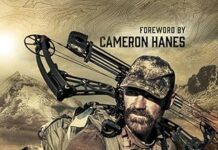
I think a hunter who wants a barn-burner of a buck has to dedicate almost every hunting day available to the pursuit if he wants half a chance. I gave up elk hunting in 1994- it was just becoming a distraction- and can say 20 years later that it was a good decision for me. The money and time that it takes to find and kill big mule deer can be overwhelming.
Looking back at 2013, our number one Rok Blog post was: Application Strategy: My Personal Strategy Part II followed not far behind by Part I. I was surprised at that stat, but really shouldn’t be. Most people ask me “where” way more than “how”. While I rarely talk units, (plenty of talk out there on that subject) I’m happy to share the thinking behind my strategy if people want to read this stuff. I’ll dedicate several blog posts over the next few weeks to my 2014 plans. Links to application websites can be accessed by clicking on the name of state. If you need professional help in researching the best place to hunt, consider joining the Huntin’ Fool. Click on their add upper right side of the blog for more information.
Arizona: I list this one first as her application period for elk opens in early January. “Wait, you just said you gave up elk hunting!” you’re thinking.
Well almost. I haven’t completely given up on hunting a really big bull elk. I’m using this time in my life to invest in the future when someday I might have more time and energy to invest in elk. As Arizona requires a non-refundable hunting license to apply for deer, I pay the extra $15 for an elk bonus point. Someday I might get to try my hand at the best elk state in the West. With the hunting license purchased, I can then play the other states’ draws this spring. If I don’t draw a conflicting tag, then I’ll apply for one of the good mule deer hunts Arizona offers in their June application for deer. I think an Arizona resident can find good bucks outside of the premium draw areas, but that’s tough for a non-resident living afar.
Utah: This state offers some of the best genetics in the West. However, unless you live there and can scout, or draw one of their top 10 hunts, it’s a tough state to kill a great buck in. I’ve accumulated 14 bonus points and am starting to get close to a few decent primitive weapon hunts. I’ll apply for one of those this year. Utah is also trying to manage their general seasons better but only time will tell if those are worth hunting for a non-resident. I have no doubt a Utah resident could do well in some of those general hunts if he puts in the time. Utah’s application deadline is March 6th with results out by May- early enough I can adjust my strategy for Colorado, Wyoming, and Idaho if I draw a conflicting tag.
Montana: While I think a resident hunter can find shooter bucks under the Big Sky, I don’t think non-residents can get their money’s worth for outsized bucks. I’ve got Montana on the back burner for now, even for points. If I were rich, I’d probably play their draw system, but at this point in my life, I’ll spend my funds where I have a better chance. Montana’s application period closes March 15th.
Wyoming: With an deadline to apply for deer March 15th but drawing results posted in late June, Wyoming makes me a little crazy. Often by late June, I have a few hunts lined up. Drawing a Wyoming tag might conflict. However, Wyoming does offer the option to withdraw an application by early June and get your money back, so I feel better about applying. For me, only Western Wyoming makes sense to apply for. There are better draw units but even top level point holders are shocked at the low draw odds. Wyoming is struggling, but if you scout, hunt hard, and never give up, much of the state can produce 180″+ bucks. Last year, one of the biggest non-typicals taken in the West came out of an easy draw unit for non-residents. Residents still have relatively good hunting in Wyoming.
Make sure you subscribe to the Rok Blog, upper right under Fitness/Other links, so you don’t miss my upcoming post on Colorado, New Mexico, Nevada, Oregon, and Idaho.



















